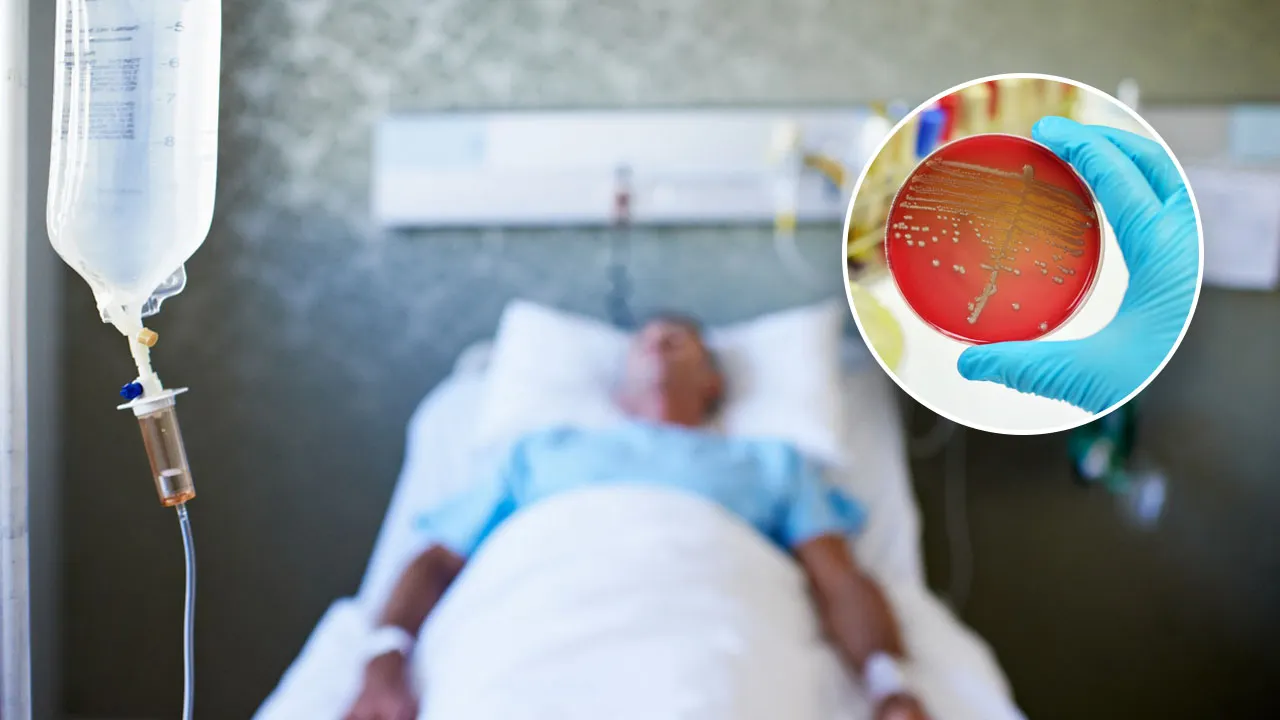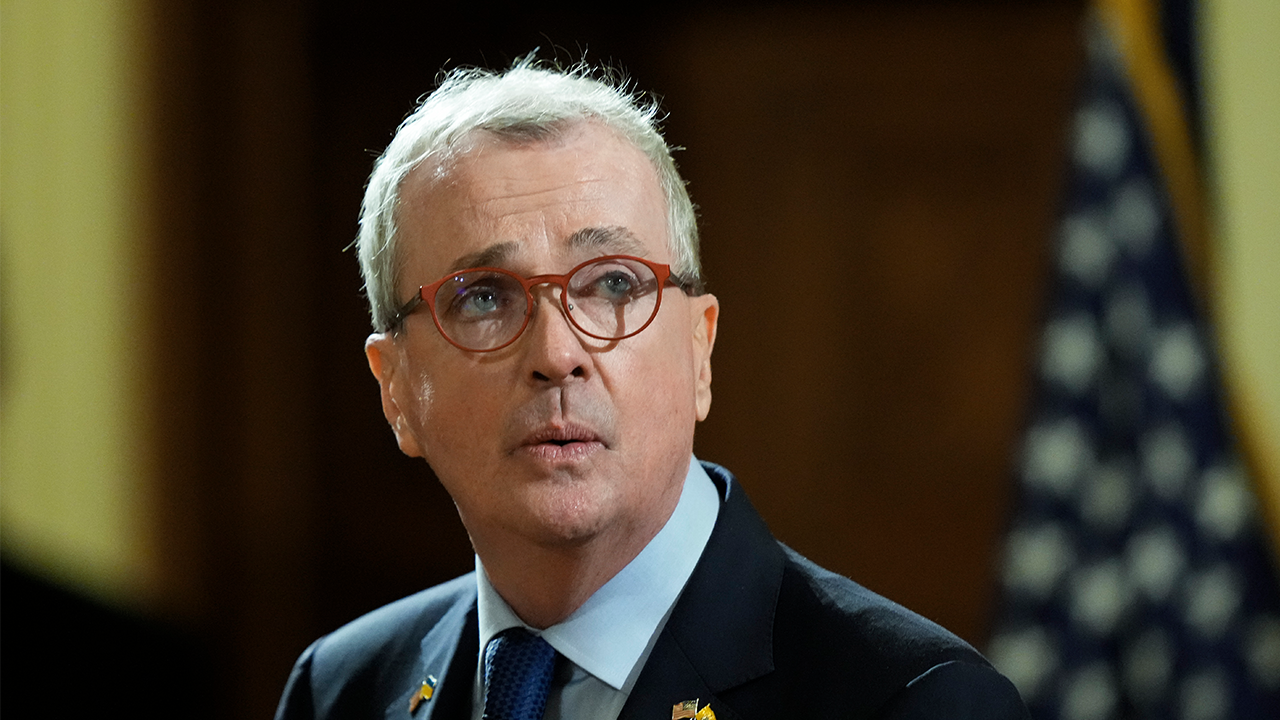Health
Sepsis a top killer in US behind heart disease, cancer: What to know, how to avoid the condition

“Real Housewives of Orange County” star Vicki Gunvalson, 62, is sharing her recent health scare after she was hospitalized with sepsis, a potentially deadly disease that results from the body’s response to an infection.
“This entire health scare came unannounced — with no warning,” Gunvalson told Fox News Digital.
As Sepsis Awareness Month kicks off this September, Gunvalson’s timely story is helping to raise awareness of the illness.
‘REAL HOUSEWIVES’ STAR DETAILS ‘DEADLY’ INFECTION SHE BATTLED THAT HAD ’10 TO 20 PERCENT SURVIVAL’ RATE
“Sepsis awareness can and does save lives, yet only 65% of American adults have ever heard of it,” Selena A. Gilles, clinical professor and associate dean at New York University Rory Meyers College of Nursing, told Fox News Digital.
Gilles is on the advisory board of the Sepsis Alliance, a California-based organization that works across the country to decrease suffering from sepsis.
Sepsis kills 350,000 American adults each year and is a leading cause of death in U.S. hospitals, statistics show. (iStock)
“Prompt recognition and treatment can be of great importance in preventing significant illness and even mortality,” Dr. Aaron Glatt, chief of infectious diseases at Mount Sinai South Nassau Hospital on Long Island, New York, told Fox News Digital.
Gunvalson’s diagnosis
Gunvalson shared the details of her sepsis diagnosis with Fox News Digital.
“Two weeks ago, when I was heading to my office, I was very delirious and unclear on where I was going,” Gunvalson said via email.
OHIO WOMAN WHO LOST ALL FOUR LIMBS TO FLU COMPLICATIONS SPEAKS OUT TO RAISE AWARENESS
“Once I got into the office, my staff realized I was not acting normal,” she went on. “My assistant thought that I was possibly having a stroke.”
The emergency room diagnosed Gunvalson with a “sinus disease” and sent her home, but by the next morning, she was “extremely incoherent” — so her boyfriend took her back to the hospital.

“Real Housewives of Orange County” star Vicki Gunvalson, 62, is sharing her recent health scare after she was hospitalized with sepsis, a potentially deadly disease that results from the body’s response to an infection. (Amanda Edwards/Getty Images)
“I was admitted for six days with sepsis and pneumonia,” she said.
Gunvalson was treated with a course of antibiotics and is now recovering at home, while staying in regular contact with the sepsis team at the hospital.
OHIO WOMAN WHO LOST ALL FOUR LIMBS TO FLU COMPLICATIONS SPEAKS OUT TO RAISE AWARENESS
The reality TV star has experienced some memory loss and difficulty concentrating, but said she hopes the “brain fog” will improve over time.
In retrospect, the sepsis may have stemmed from a sinus infection two months ago that was treated by multiple rounds of antibiotics, Gunvalson said.
Symptoms and dangers
Common symptoms of sepsis include fever, chills, rapid heart rate, confusion, shortness of breath, extreme pain, and clammy or sweaty skin, according to Gilles.
A high fever – especially in those who are at increased risk of infection and are feeling extremely unwell – should warrant seeking medical attention as soon as possible, Glatt added.
“Sepsis awareness can and does save lives, yet only 65% of American adults have ever heard of it.”
“Fatigue and lethargy in the setting of infection can be a sign of pneumonia and potential sepsis, even without overt pulmonary symptoms,” Dr. Marc Siegel, Fox News’ senior medical analyst and clinical professor of medicine at NYU Langone Medical Center, told Fox News Digital.
NEW SURGICAL TECHNOLOGY CAN ‘LIGHT UP’ BACTERIA IN WOUNDS, HELPING TO PREVENT INFECTIONS
As sepsis can start within hours, Gilles suggested following the acronym “TIME” to remember that time is of the essence when it comes to seeking treatment.
T – Temperature (higher or lower than normal)
I – Infection (know the signs and symptoms)
M – Mental decline (confusion, sleepiness and difficulty awakening)
E – Extremely ill (severe pain, discomfort and shortness of breath)
Approximately 1.7 million adults are diagnosed with sepsis every year in the U.S., according to the Centers for Disease Control and Prevention (CDC).

Approximately 1.7 million adults are diagnosed with sepsis every year in the U.S., according to the Centers for Disease Control and Prevention. (iStock)
The illness kills 350,000 American adults each year and is a leading cause of death in U.S. hospitals, Gilles noted.
It is the third-leading killer behind heart disease, which takes just over 700,000 lives each year, and cancer, which causes more than 600,000 annual deaths, per CDC data.
“Sepsis takes a life every 90 seconds — that’s more lives than opioids, breast cancer, prostate cancer and stroke combined,” she said.
Common myths about sepsis
Many people mistakenly assume that sepsis is an infection.
“Sepsis is the body’s overwhelming and life-threatening response to infection, which can lead to tissue damage, organ failure and death,” Gilles said.
The condition can come after any infection — whether just a scrape or cut, a dental procedure or surgery, or even a [bacteria], fungus or parasite — triggers a “chain reaction” in the body, the doctor added.

Treatment of sepsis will vary based on the underlying infection, but it often involves administering antibiotics as soon as possible. (iStock)
Another common myth is that sepsis only occurs in those who are (or were recently) hospitalized.
Most cases of sepsis, around 87%, start before a patient enters the hospital, Gilles said.
AFTER LOSING HER LEG TO THE FLU, VIRGINIA WOMAN URGES PEOPLE TO GET VACCINATED: ‘DON’T WASTE TIME’
“Community-acquired infections, such as urinary tract infections, pneumonia and even simple cuts or scrapes can lead to sepsis if not treated properly,” Gilles noted.
Many people also think sepsis only affects immunocompromised people.

Older adults, infants and those with chronic illnesses or weakened immune systems are at a higher risk of sepsis. (iStock)
“Sepsis can strike almost anyone at almost any time,” Glatt said.
“While certain individuals are at higher risk of getting a severe infection that can even be deadly, serious infections can strike even a perfectly healthy young person with rare but potentially fatal consequences,” he went on.
Older adults, infants and those with chronic illnesses or weakened immune systems are at a higher risk, however.
Treatment and prevention
The first step is discovering the underlying cause of the infection, according to the CDC.
Sepsis often starts in the gastrointestinal tract, lungs, skin or urinary tract.

“Sepsis is the body’s overwhelming and life-threatening response to infection, which can lead to tissue damage, organ failure and death,” a doctor said. (iStock)
Treatment will vary based on the underlying infection, but often involves administering antibiotics as soon as possible.
“While antibiotics are crucial for treating an underlying bacterial infection, managing sepsis often requires a comprehensive approach — including fluids, medications to support blood pressure, and sometimes surgery or [a ventilator], depending on the severity,” said Gilles.
CLICK HERE TO SIGN UP FOR OUR HEALTH NEWSLETTER
Surgery is sometimes necessary to remove tissue damaged by the infection, the CDC states.
It’s also important to maintain blood flow to the organs, often with fluids.
“Sepsis can strike almost anyone at almost any time.”
“If you suspect sepsis, seek medical attention right away,” Gilles advised.
The risk can be reduced by quickly identifying and managing infections, according to the doctor.
For more Health articles, visit www.foxnews.com/health
Added Gilles, “It can also be prevented by practicing good hygiene, staying current with vaccinations, staying in good health, keeping cuts clean and dry, and promptly seeking treatment when infections are suspected.”

Health
Cancer Remission Like Catherine’s Does Not Always Mean the Illness Is Cured

Princess Catherine, wife of Prince William, reported on Tuesday that her cancer was in remission. But what does it mean to be in remission from cancer?
Doctors discovered her cancer unexpectedly last March when she had abdominal surgery. She has not revealed the type of cancer she has, nor how advanced it was when it was discovered.
But she did say she had chemotherapy, which she said had been completed in September. She told the British news agency PA Media that she had a port, a small device that is implanted under the skin and attached to a catheter that goes into a large vein. It allows medicines like chemotherapy drugs to be delivered directly to veins in the chest, avoiding needle sticks.
Catherine told PA Media that chemotherapy was “really tough.”
“It is a relief to now be in remission and I remain focused on recovery,” she wrote on Instagram.
Her announcement “certainly is good news and is reassuring,” said Dr. Kimmie Ng, associate chief of the division of gastrointestinal oncology at the Dana-Farber Cancer Institute in Boston.
But cancer experts like Dr. Ng say that the meaning of remission in a patient can vary.
In general, when doctors and patients talk about remission, they mean there is no evidence of cancer in blood tests or scans.
The problem is that a complete remission does not mean the cancer is gone. Even when a cancer is “cured” — defined as no evidence of cancer for five years — it may not be vanquished.
That makes life emotionally difficult for patients, who have to have frequent visits with oncologists for physical exams, blood tests and imaging.
“It’s really scary,” Dr. Ng said. “The amount of uncertainty is very very hard,” she added.
But that ongoing surveillance is necessary, despite the toll it takes on patients.
“Different cancers have different propensities of returning or not returning,” said Dr. Elena Ratner, a gynecologic oncologist at the Yale Cancer Center.
As many as 75 to 80 percent of ovarian cancers, she noted, can come back in an average of 14 to 16 months after a remission, depending on the stage the cancer had reached when it was found and on the cancer’s biology.
“Once the cancer returns, it becomes a chronic disease,” Dr. Ratner said. She tells her patients: “You will live with this cancer. You will be on and off chemotherapy for the rest of your life.”
Dr. Ratner’s gynecological cancer patients have to come back every three months for CT scans to keep an eye out for evidence that the cancer has returned.
“The women live CT scan to CT scan,” she said. “They say that for two and a half months, they have a wonderful life, but then, in time for the next CT scan, the fear returns.”
“It costs them — it costs them a lot,” she said.
“It’s awful, yet I am amazed every day by their strength,” she said of her patients.
Health
Death Toll in Gaza Likely 40 Percent Higher Than Reported, Researchers Say

Deaths from bombs and other traumatic injuries during the first nine months of the war in Gaza may have been underestimated by more than 40 percent, according to a new analysis published in The Lancet.
The peer-reviewed statistical analysis, led by epidemiologists at the London School of Hygiene and Tropical Medicine, used modeling in an effort to provide an objective third-party estimate of casualties. The United Nations has relied on the figure from the Hamas-led Ministry of Health, which it says has been largely accurate, but which Israel criticizes as inflated.
But the new analysis suggests the Hamas health ministry tally is a significant undercount. The researchers concluded that the death toll from Israel’s aerial bombardment and military ground operation in Gaza between October 2023 and the end of June 2024 was about 64,300, rather than the 37,900 reported by the Palestinian Ministry of Health.
The estimate in the analysis corresponds to 2.9 percent of Gaza’s prewar population having been killed by traumatic injury, or one in 35 inhabitants. The analysis did not account for other war-related casualties such as deaths from malnutrition, water-borne illness or the breakdown of the health system as the conflict progressed.
The study found that 59 percent of the dead were women, children and people over the age of 65. It did not establish what share of the reported dead were combatants.
Mike Spagat, an expert on calculating casualties of war who was not involved in this research, said the new analysis convinced him that Gaza casualties were underestimated.
“This is a good piece of evidence that the real number is higher, probably substantially higher, than the Ministry of Health’s official numbers, higher than I had been thinking over the last few months,” said Dr. Spagat, who is a professor at Royal Holloway College at the University of London.
But the presentation of precise figures, such as a 41 percent underreported mortality, is less useful, he said, since the analysis actually shows the real total could be less than, or substantially more. “Quantitatively, it’s a lot more uncertain than I think comes out in the paper,” Dr. Spagat said.
The researchers said their estimate of 64,260 deaths from traumatic injury has a “confidence interval” between 55,298 and 78,525, which means the actual number of casualties is likely in that range.
If the estimated level of underreporting of deaths through June 2024 is extrapolated out to October 2024, the total Gazan casualty figure in the first year of the war would exceed 70,000.
“There is an importance to war injury deaths, because it speaks to the question of whether the campaign is proportional, whether it is, in fact, the case that sufficient provisions are made to to avoid civilian casualties,” said Francesco Checchi, an epidemiologist with an expertise in conflict and humanitarian crises and a professor at the London School of Hygiene and Tropical Medicine who was an author on the study. “I do think memorializing is important. There is inherent value in just trying to come up with the right number.”
The analysis uses a statistical method called capture-recapture analysis, which has been used to estimate casualties in other conflicts, including civil wars in Colombia and Sudan.
For Gaza, the researchers drew on three lists: The first is a register maintained by the Palestinian Ministry of Health, which mainly comprises the dead in hospital morgues and estimates of the number of unrecovered people buried in rubble. The second is deaths reported by family or community members through an online survey form the ministry established on Jan. 1, 2024, when the prewar death registration system had broken down. It asked Palestinians inside and outside Gaza to provide names, ages, national ID number and location of death for casualties. The third source was obituaries of people who died from injuries that were published on social media, which may not include all of the same biographical details and which the researchers compiled by hand.
The researchers analyzed these sources to look for individuals who appear on multiple lists of those killed. A high level of overlap would have suggested that few deaths were uncounted; the low amount they found suggested the opposite. The researchers used models to calculate the probability of each individual appearing on any of the three lists.
“Models enable us to actually estimate the number of people who have not been listed at all,” Dr. Checchi said. That, combined with the listed number, gave the analysts their total.
Patrick Ball, director of research at the Human Rights Data Analysis Group, and a statistician who has conducted similar estimates of violent deaths in conflicts in other regions, said the study was strong and well reasoned. But he cautioned that the authors may have underestimated the amount of uncertainty caused by the ongoing conflict.
The authors used different variations of mathematical models in their calculations, but Dr. Ball said that rather than presenting a single figure — 64,260 deaths — as the estimate, it may have been more appropriate to present the number of deaths as a range from 47,457 to 88,332 deaths, a span that encompasses all of the estimates produced by modeling the overlap among the three lists.
“It’s really hard to do this kind of thing in the middle of a conflict,” Dr. Ball said. “It takes time, and it takes access. I think you could say the range is larger, and that would be plausible.”
While Gaza had a strong death registration process before the war, it now has only limited function after the destruction of much of the health system. Deaths are uncounted when whole families are killed simultaneously, leaving no one to report, or when an unknown number of people die in the collapse of a large building; Gazans are increasingly buried near their homes without passing through a morgue, Dr. Checchi said.
The authors of the study acknowledged that some of those assumed dead may in fact be missing, most likely taken as prisoners in Israel.
Roni Caryn Rabin and Lauren Leatherby contributed reporting.
Health
Dementia risk for people 55 and older has doubled, new study finds

Dementia cases in the U.S. are expected to double by 2060, with an estimated one million people diagnosed per year, according to a new study led by Johns Hopkins University and other institutions.
Researchers found that Americans’ risk of developing dementia after age 55 is 42%, double the risk that has been identified in prior studies, a press release stated.
For those who reach 75 years of age, the lifetime risk exceeds 50%, the study found.
AGING ‘HOTSPOT’ FOUND IN BRAIN, RESEARCHERS SAY: ‘MAJOR CHANGES’
Women face a 48% average risk and men have a 35% risk, with the discrepancy attributed to women living longer than men.
Dementia cases in the U.S. are expected to double by 2060, with an estimated one million people diagnosed per year. (iStock)
The study, which was published in the journal Nature Medicine on Jan. 13, analyzed data from the Atherosclerosis Risk in Communities Neurocognitive Study (ARIC-NCS), which has tracked the cognitive and vascular health of nearly 16,000 adults since 1987.
DEEP SLEEP CAN KEEP TWO BIG HEALTH PROBLEMS AT BAY, NEW STUDIES SUGGEST
“Our study results forecast a dramatic rise in the burden from dementia in the United States over the coming decades, with one in two Americans expected to experience cognitive difficulties after age 55,” said study senior investigator and epidemiologist Josef Coresh, MD, PhD, who serves as the founding director of the Optimal Aging Institute at NYU Langone, in the release.
Understanding risk factors
“One of the main reasons for the increase is that great medicine and tecnological advances are keeping us alive longer and age is a risk factor for dementia,” Dr. Marc Siegel, clinical professor of medicine at NYU Langone Health and Fox News senior medical analyst, told Fox News Digital.
“Obesity is associated with inflammation, diabetes and high blood pressure, which are all independent risk factors for dementia.”
In addition to aging, other risk factors include genetics, obesity, hypertension, diabetes, unhealthy diets of ultraprocessed foods, sedentary lifestyles and mental health disorders, the release said.
“We have an obesity epidemic with over 45% adults obese in the U.S.,” Siegel noted. “Obesity is associated with inflammation, diabetes and high blood pressure, which are all independent risk factors for dementia.”
“And as an unhealthy population, we also have more heart disease, and atrial fibrillation is a risk factor for cognitive decline,” he added.
Dementia risk was found to be higher among people who have a variant of the APOE4 gene, which has been linked to late-onset Alzheimer’s disease. Black adults also have a higher risk.

Researchers found that Americans’ risk of developing dementia after age 55 is 42%, double the risk that has been identified in prior studies. (iStock)
Research has shown that the same interventions used to prevent heart disease risk could also prevent or slow down dementia, the study suggested.
“The pending population boom in dementia cases poses significant challenges for health policymakers in particular, who must refocus their efforts on strategies to minimize the severity of dementia cases, as well as plans to provide more health care services for those with dementia,” said Coresh.
CLICK HERE TO SIGN UP FOR OUR HEALTH NEWSLETTER
What needs to change?
Professor Adrian Owen, PhD, neuroscientist and chief scientific officer at Creyos, a Canada-based company that specializes in cognitive assessment and brain health, referred to the increase in dementia cases as a “tidal wave.”
“This new study’s anticipated surge in dementia cases underscores the urgent need for early and accurate detection,” he told Fox News Digital.
“By catching issues early, we give people the power to make lifestyle adjustments, seek available treatments and plan their futures with clarity.”
“By identifying cognitive decline at its earliest stages, we have an opportunity to intervene before patients and families bear the full weight of the disease.”
Owen recommends conducting regular cognitive assessments as part of routine check-ups to proactively identify early signs of cognitive decline.
“By catching issues early, we give people the power to make lifestyle adjustments, seek available treatments and plan their futures with clarity,” he said.

“By identifying cognitive decline at its earliest stages, we have an opportunity to intervene before patients and families bear the full weight of the disease.” (iStock)
Maria C. Carrillo, PhD, chief science officer and medical affairs lead for the Alzheimer’s Association in Chicago, said there is an “urgent need” to address the global crisis of Alzheimer’s disease and dementia.
To help keep the aging brain healthy, the Alzheimer’s Association published its report 10 Healthy Habits for Your Brain. Some of the tips are listed below.
For more Health articles, visit www.foxnews.com/health
– Participate in regular physical activity.
– Learn new things throughout your life and engage your brain.
– Get proper nutrition — prioritize vegetables and leaner meats/proteins, along with foods that are less processed and lower in fat.
– Avoid head injury (protect your head).
– Have a healthy heart and cardiovascular system — control blood pressure, avoid diabetes or treat it if you have it, manage your weight and don’t smoke.

Research has shown that the same interventions used to prevent heart disease risk could also prevent or slow down dementia. (iStock)
The research was funded by the National Institutes of Health.
Fox News Digital reached out to the researchers for additional comment.
-

 Health1 week ago
Health1 week agoOzempic ‘microdosing’ is the new weight-loss trend: Should you try it?
-
/cdn.vox-cdn.com/uploads/chorus_asset/file/25822586/STK169_ZUCKERBERG_MAGA_STKS491_CVIRGINIA_A.jpg)
/cdn.vox-cdn.com/uploads/chorus_asset/file/25822586/STK169_ZUCKERBERG_MAGA_STKS491_CVIRGINIA_A.jpg) Technology6 days ago
Technology6 days agoMeta is highlighting a splintering global approach to online speech
-

 Science3 days ago
Science3 days agoMetro will offer free rides in L.A. through Sunday due to fires
-
/cdn.vox-cdn.com/uploads/chorus_asset/file/25821992/videoframe_720397.png)
/cdn.vox-cdn.com/uploads/chorus_asset/file/25821992/videoframe_720397.png) Technology1 week ago
Technology1 week agoLas Vegas police release ChatGPT logs from the suspect in the Cybertruck explosion
-

 Movie Reviews1 week ago
Movie Reviews1 week ago‘How to Make Millions Before Grandma Dies’ Review: Thai Oscar Entry Is a Disarmingly Sentimental Tear-Jerker
-

 Health1 week ago
Health1 week agoMichael J. Fox honored with Presidential Medal of Freedom for Parkinson’s research efforts
-

 Movie Reviews1 week ago
Movie Reviews1 week agoMovie Review: Millennials try to buy-in or opt-out of the “American Meltdown”
-

 News1 week ago
News1 week agoPhotos: Pacific Palisades Wildfire Engulfs Homes in an L.A. Neighborhood













